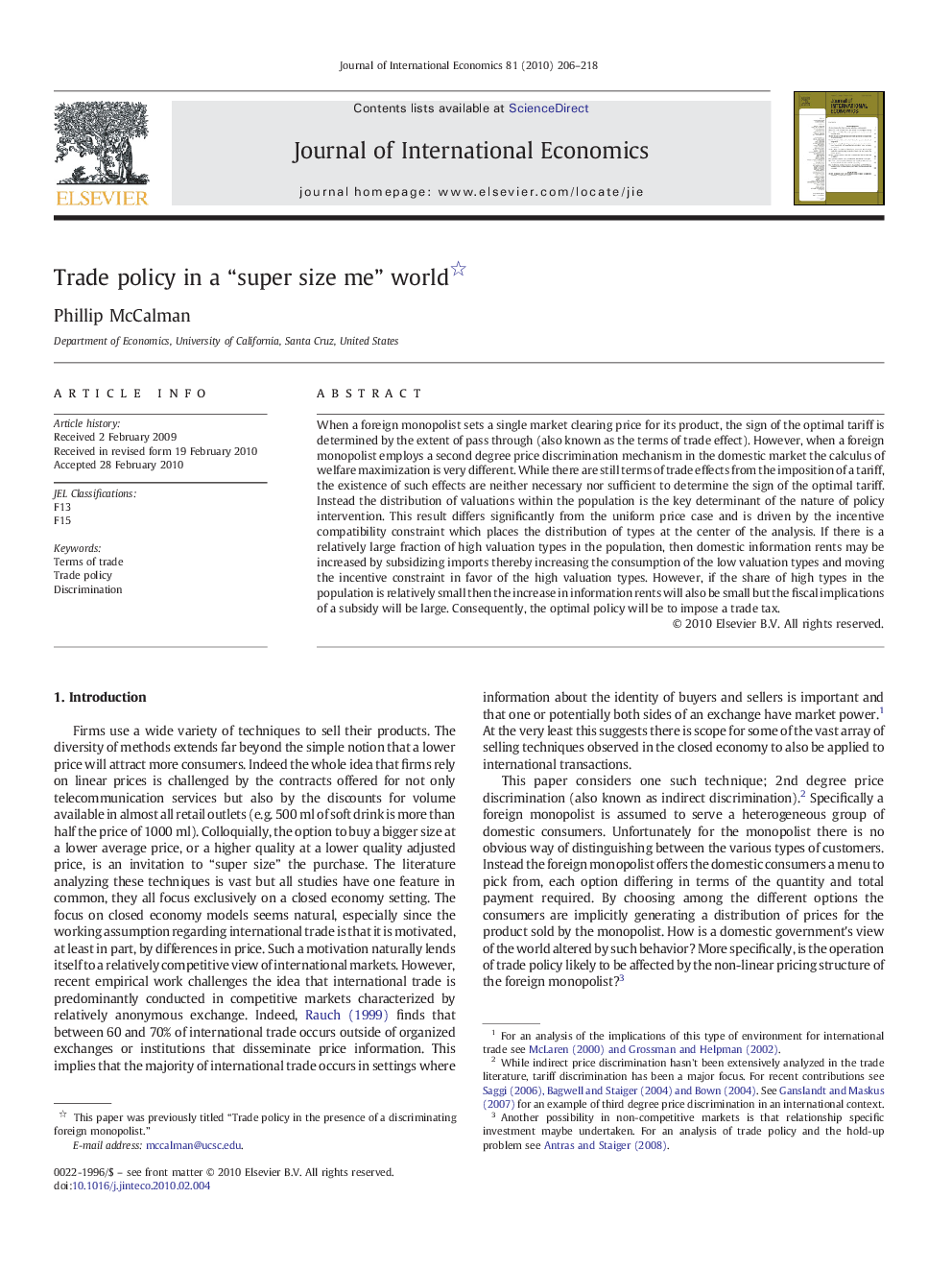| Article ID | Journal | Published Year | Pages | File Type |
|---|---|---|---|---|
| 962389 | Journal of International Economics | 2010 | 13 Pages |
Abstract
When a foreign monopolist sets a single market clearing price for its product, the sign of the optimal tariff is determined by the extent of pass through (also known as the terms of trade effect). However, when a foreign monopolist employs a second degree price discrimination mechanism in the domestic market the calculus of welfare maximization is very different. While there are still terms of trade effects from the imposition of a tariff, the existence of such effects are neither necessary nor sufficient to determine the sign of the optimal tariff. Instead the distribution of valuations within the population is the key determinant of the nature of policy intervention. This result differs significantly from the uniform price case and is driven by the incentive compatibility constraint which places the distribution of types at the center of the analysis. If there is a relatively large fraction of high valuation types in the population, then domestic information rents may be increased by subsidizing imports thereby increasing the consumption of the low valuation types and moving the incentive constraint in favor of the high valuation types. However, if the share of high types in the population is relatively small then the increase in information rents will also be small but the fiscal implications of a subsidy will be large. Consequently, the optimal policy will be to impose a trade tax.
Related Topics
Social Sciences and Humanities
Economics, Econometrics and Finance
Economics and Econometrics
Authors
Phillip McCalman,
